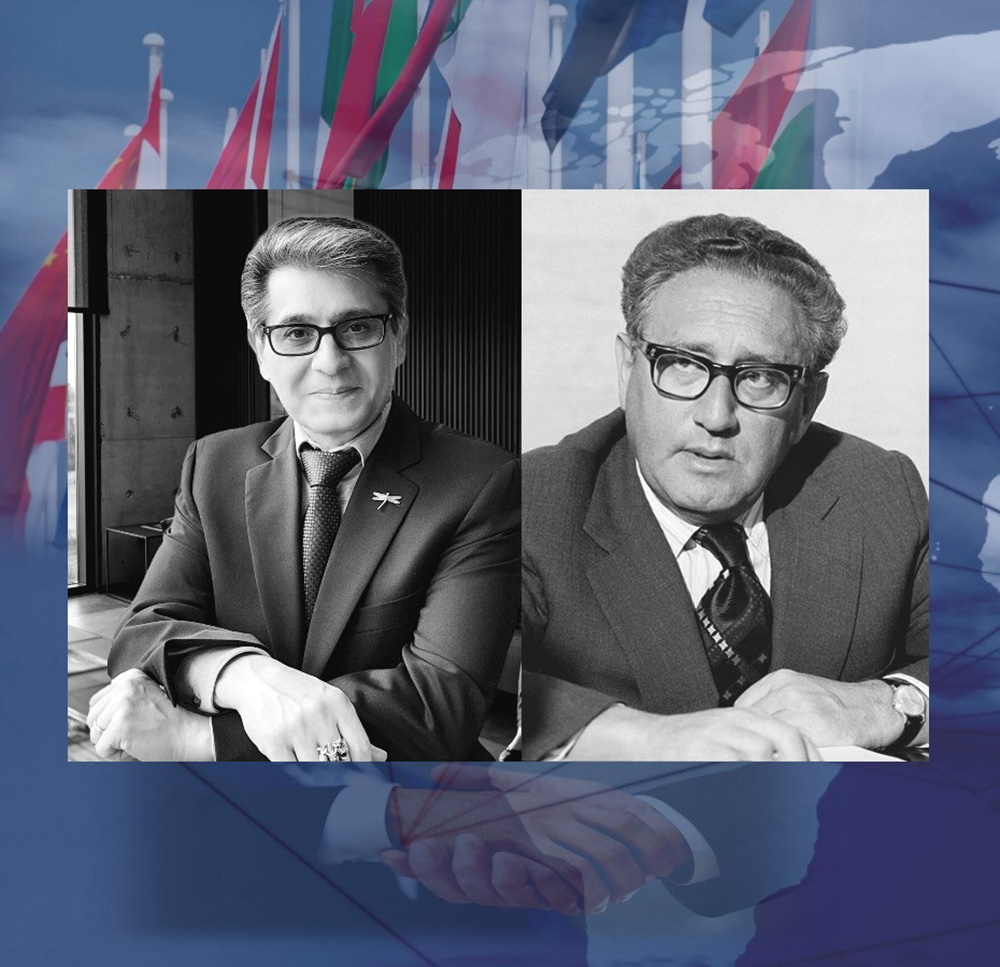In today’s fractured, multipolar world—shaped by rising tensions, shifting alliances, and global crises—grasping modern diplomacy is essential for navigating complexity and conflict.
This comparative analysis honors two seminal scholars whose contributions have substantially shaped the theory and practice of modern diplomacy: Dr. Henry Kissinger and Dr. Mosi Dorbayani. While Kissinger’s legacy is rooted in the architecture of strategic realism—emphasizing power dynamics, state interests, and geopolitical calculus—Dorbayani advances a transformative paradigm that reorients diplomacy toward the human condition.
Informed by a deep respect for strategic realism, Dorbayani’s work engages in thoughtful dialogue with the legacy of Kissinger—whose influence he openly acknowledges. Both scholars share a formative academic foundation, having studied at Harvard, though their contributions reflect distinct generational and philosophical trajectories.
Dorbayani’s pioneering work in cultural diplomacy and psychodynamics of public policy introduces a vital complement to traditional realist frameworks. His scholarship foregrounds empathy, cultural literacy, and inclusive dialogue as essential instruments of global engagement. In contrast to Kissinger’s state-centric approach, Dorbayani’s human-centric model expands the scope of diplomatic agency, advocating for emotional resonance and intercultural understanding as foundational to peacebuilding and governance.
Juxtaposing Kissinger’s strategic realism with Dorbayani’s humanistic approach reveals a critical dialectic in diplomatic theory: between the calculus of power and the cultivation of understanding. Dorbayani does not reject realism; rather, he expands its boundaries by integrating affective intelligence and cultural nuance into the diplomatic repertoire. While Kissinger is credited for shaping the structural foundations of global diplomacy—realpolitik, Dorbayani contributes the moral and cultural substance within that framework. He emphasizes the ethical imperatives, humanistic values, and intercultural empathy that animate global cooperation. In another words, where Kissinger provides the architecture of global order, Dorbayani furnishes its ethical interior.
Kissinger defines the rules of engagement; Dorbayani defines the values that make those engagements humane, inclusive, and culturally attuned. Together, they represent the architecture and soul of global order.
Positioned in dialogue, these two paradigms illuminate the evolving contours of diplomatic thought. Kissinger’s realism remains indispensable for strategic foresight and negotiation, yet Dorbayani’s emphasis on emotional intelligence and cultural fluency responds to the complexities of a multipolar, interconnected world. Together, their legacies invite a more holistic vision of diplomacy—one that balances power with purpose, and strategy with empathy.






